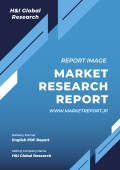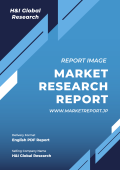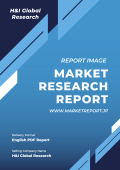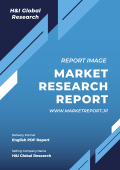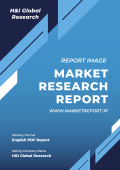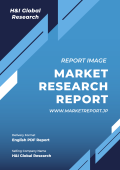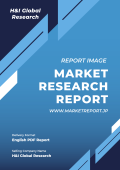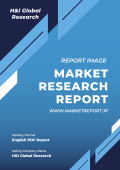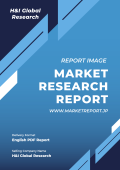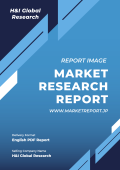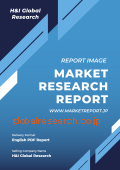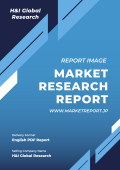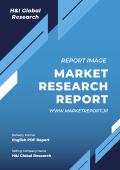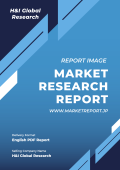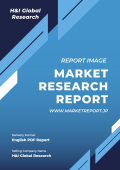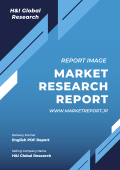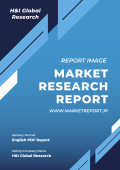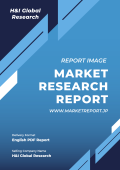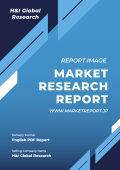| ■ 英語タイトル:Lithium Iron Phosphate Battery Market by Type (Portable Battery, Stationary Battery), Voltage (Low (Below 12V), Medium (12V–36V), High (Above 36V)), Capacity (0–16,250 mAh, 16,251–50,000 mAh, 50,001–100,000 mAh, 100,001–540,000 mAh), End User (Automotive, Power, Industrial, Aerospace, Marine, and Others), and Region 2023-2028
|
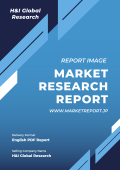 | ■ 発行会社/調査会社:IMARC
■ 商品コード:IMARC23JLY142
■ 発行日:2023年7月
■ 調査対象地域:グローバル
■ 産業分野:材料
■ ページ数:146
■ レポート言語:英語
■ レポート形式:PDF
■ 納品方式:Eメール
|
■ 販売価格オプション
(消費税別)
Warning: foreach() argument must be of type array|object, null given in
/home/hni-mkt/globalresearch.co.jp/public_html/wp-content/themes/twentyfourteen/content.php on line
189
Warning: foreach() argument must be of type array|object, null given in
/home/hni-mkt/globalresearch.co.jp/public_html/wp-content/themes/twentyfourteen/content.php on line
193
Warning: foreach() argument must be of type array|object, null given in
/home/hni-mkt/globalresearch.co.jp/public_html/wp-content/themes/twentyfourteen/content.php on line
197
Warning: Undefined variable $YEN_USD in
/home/hni-mkt/globalresearch.co.jp/public_html/wp-content/themes/twentyfourteen/content.php on line
212
Warning: Undefined variable $YEN_USD in
/home/hni-mkt/globalresearch.co.jp/public_html/wp-content/themes/twentyfourteen/content.php on line
214
Warning: Undefined variable $YEN_USD in
/home/hni-mkt/globalresearch.co.jp/public_html/wp-content/themes/twentyfourteen/content.php on line
216
※販売価格オプションの説明はこちらで、ご購入に関する詳細案内はご利用ガイドでご確認いただけます。
※お支払金額は「換算金額(日本円)+消費税+配送料(Eメール納品は無料)」です。
※Eメールによる納品の場合、通常ご注文当日~2日以内に納品致します。
※レポート納品後、納品日+5日以内に請求書を発行・送付致します。(請求書発行日より2ヶ月以内の銀行振込条件、カード払いも可能)
※IMARC社の概要及び新刊レポートはこちらでご確認いただけます。
*** レポート概要(サマリー)***IMARC社の本市場調査レポートでは、2022年に123億ドルであった世界のリン酸鉄リチウム電池市場規模が、2028年までに283億ドルに達し、予測期間中(2023-2028)に年平均15%成長すると予想しています。本レポートでは、リン酸鉄リチウム電池の世界市場について調査・分析し、序論、市場範囲・定義、エグゼクティブサマリー、イントロダクション、市場概況、種類別(可動型、固定型)分析、電圧別(低(12V以下)、中(12V-36V)、高(36V以上))分析、容量別(0-16,250mAh、16,251-50,000mAh、50,001-100,000mAh、100,001-540,000mAh)分析、エンドユーザー別(自動車、電力、工業、航空宇宙、その他)分析、地域別(北米、アメリカ、カナダ、アジア太平洋、中国、日本、インド、韓国、オーストラリア、インドネシア、ヨーロッパ、ドイツ、フランス、イギリス、イタリア、スペイン、ロシア、中南米、ブラジル、メキシコ、中東・アフリカ)分析、推進要因・制約・機会、バリューチェーン分析、ファイブフォース分析、価格分析、競争状況などの項目を掲載しています。また、本書には、A123 Systems LLC(Wanxiang Group Corporation)、Bharat Power Solutions、Electric Vehicle Power System Technology Co. Ltd.、EverExceed Industrial Co. Ltd.、Greensun Solar Energy Tech Co. Ltd.、K2 Energy Solutions Inc.などの企業情報が含まれています。
・序論
・市場範囲・定義
・エグゼクティブサマリー
・イントロダクション
・市場概況
・世界のリン酸鉄リチウム電池市場規模:種類別
- 可動型電池の市場規模
- 固定型電池の市場規模
・世界のリン酸鉄リチウム電池市場規模:電圧別
- 低電圧(12V以下)リン酸鉄リチウム電池の市場規模
- 中電圧(12V-36V)リン酸鉄リチウム電池の市場規模
- 高電圧(36V以上)リン酸鉄リチウム電池の市場規模
・世界のリン酸鉄リチウム電池市場規模:容量別
- 0-16,250mAhのリン酸鉄リチウム電池市場規模
- 16,251-50,000mAhのリン酸鉄リチウム電池市場規模
- 50,001-100,000mAhのリン酸鉄リチウム電池市場規模
- 100,001-540,000mAhのリン酸鉄リチウム電池市場規模
・世界のリン酸鉄リチウム電池市場規模:エンドユーザー別
- 自動車における市場規模
- 電力における市場規模
- 工業における市場規模
- 航空宇宙における市場規模
- その他エンドユーザーにおける市場規模
・世界のリン酸鉄リチウム電池市場規模:地域別
- 北米のリン酸鉄リチウム電池市場規模
アメリカのリン酸鉄リチウム電池市場規模
カナダのリン酸鉄リチウム電池市場規模
- アジア太平洋のリン酸鉄リチウム電池市場規模
中国のリン酸鉄リチウム電池市場規模
日本のリン酸鉄リチウム電池市場規模
インドのリン酸鉄リチウム電池市場規模
…
- ヨーロッパのリン酸鉄リチウム電池市場規模
ドイツのリン酸鉄リチウム電池市場規模
フランスのリン酸鉄リチウム電池市場規模
イギリスのリン酸鉄リチウム電池市場規模
…
- 中南米のリン酸鉄リチウム電池市場規模
ブラジルのリン酸鉄リチウム電池市場規模
メキシコのリン酸鉄リチウム電池市場規模
…
- 中東・アフリカのリン酸鉄リチウム電池市場規模
・推進要因・制約・機会
・バリューチェーン分析
・ファイブフォース分析
・価格分析
・競争状況 |
Market Overview:
The global lithium iron phosphate battery market size reached US$ 12.3 Billion in 2022. Looking forward, IMARC Group expects the market to reach US$ 28.3 Billion by 2028, exhibiting a growth rate (CAGR) of 15% during 2023-2028. The growing demand for EVs, increasing usage of portable electronic gadgets, and the escalating demand for eco-friendly batteries due to the rising awareness among individuals about global warming represent some of the key factors driving the market.
Lithium iron phosphate (LiFePO4) batteries, also known as LFP batteries, are rechargeable lithium-ion batteries that rely on lithium iron phosphate as the cathode material. They are inherently more stable and less prone to thermal runaway or combustion as compared to other lithium-ion batteries due to the stable phosphate-based chemistry of LiFePO4, which makes them less susceptible to overheating and thermal runaway events. They have a higher tolerance for deep discharges and can maintain an enhanced capacity over time. They are suitable for applications that require increased current capabilities, such as electric vehicles (EVs) and renewable energy storage systems. They can withstand extreme temperatures without significant degradation, making them suitable for various environments and applications. They offer a longer life cycle and can consequently undergo more charge-discharge cycles before experiencing a notable decline in capacity. They also provide high power density, allowing them to deliver consistent and stable power output.
Lithium Iron Phosphate Battery Market Trends:
At present, the growing demand for electric vehicles (EVs), as they can help improve fuel economy and reduce emissions around the world, represents one of the key factors influencing the market positively. Besides this, there is an increase in the utilization of LiFePO4 batteries, as they are composed of non-toxic and abundant materials, which makes them a safer and more sustainable choice. This, along with various benefits offered by LiFePO4 batteries, such as lighter weight technology, fast charging, and low energy wastage, is propelling the growth of the market. Moreover, key players are focusing on reducing operational costs and enhancing the productivity of lithium-iron phosphate batteries by utilizing advanced technologies in their manufacturing processes. In line with this, the increasing employment of portable electronic gadgets and electric energy source-based products is providing lucrative growth opportunities to industry investors. In addition, the escalating demand for eco-friendly batteries due to the rising awareness among individuals about global warming is strengthening the growth of the market. Apart from this, there is a rise in the demand for LiFePO4 batteries, as they can be made into battery packs of any size due to their high energy density. This, coupled with the growing employment of LiFePO4 batteries in weather monitoring devices, ocean buoys, paddle boards, truck systems, and robots, is offering a favorable market outlook.
Key Market Segmentation:
IMARC Group provides an analysis of the key trends in each segment of the global lithium iron phosphate battery market, along with forecasts at the global, regional, and country levels from 2023-2028. Our report has categorized the market based on type, voltage, capacity, and end user.
Type Insights:
Portable Battery
Stationary Battery
The report has provided a detailed breakup and analysis of the lithium iron phosphate battery market based on the type. This includes portable battery and stationary battery. According to the report, portable battery represented the largest segment.
Voltage Insights:
Low (Below 12V)
Medium (12V–36V)
High (Above 36V)
A detailed breakup and analysis of the lithium iron phosphate battery market based on the voltage has also been provided in the report. This includes low (below 12V), medium (12V-36V), and high (above 36V). According to the report, high (above 36V) accounted for the largest market share.
Capacity Insights:
0–16,250 mAh
16,251–50,000 mAh
50,001–100,000 mAh
100,001–540,000 mAh
A detailed breakup and analysis of the lithium iron phosphate battery market based on the voltage has also been provided in the report. This includes 0–16,250 mAh, 16,251–50,000 mAh, 50,001–100,000 mAh, and 100,001–540,000 mAh. According to the report, 50,001–100,000 mAh accounted for the largest market share.
End User Insights:
Automotive
Power
Industrial
Aerospace
Marine
Others
A detailed breakup and analysis of the lithium iron phosphate battery market based on the end user has also been provided in the report. This includes automotive, power, industrial, aerospace, marine, and others. According to the report, automotive accounted for the largest market share.
Regional Insights:
North America
United States
Canada
Asia Pacific
China
Japan
India
South Korea
Australia
Indonesia
Others
Europe
Germany
France
United Kingdom
Italy
Spain
Russia
Others
Latin America
Brazil
Mexico
Others
Middle East and Africa
The report has also provided a comprehensive analysis of all the major regional markets, which include North America (the United States and Canada); Asia Pacific (China, Japan, India, South Korea, Australia, Indonesia, and others); Europe (Germany, France, the United Kingdom, Italy, Spain, Russia, and others); Latin America (Brazil, Mexico, and others); and the Middle East and Africa. According to the report, Asia Pacific was the largest market for lithium iron phosphate battery. Some of the factors driving the Asia Pacific lithium iron phosphate battery market included the growing demand for electric vehicles (EVs), rising utilization of smartphones and laptops, increasing demand for eco-friendly batteries, etc.
Competitive Landscape:
The report has also provided a comprehensive analysis of the competitive landscape in the global lithium iron phosphate battery market. Detailed profiles of all major companies have been provided. Some of the companies covered include A123 Systems LLC (Wanxiang Group Corporation), Bharat Power Solutions, Electric Vehicle Power System Technology Co. Ltd., EverExceed Industrial Co. Ltd., Greensun Solar Energy Tech Co. Ltd., K2 Energy Solutions Inc., Karacus Energy Private Limited, Lithium Werks Inc., OptimumNano Energy Co. Ltd., Power Sonic Corporation, RELiON Battery LLC (Brunswick Corporation), Ultralife Corporation, etc. Kindly note that this only represents a partial list of companies, and the complete list has been provided in the report.
Key Questions Answered in This Report:
How has the global lithium iron phosphate battery market performed so far, and how will it perform in the coming years?
What are the drivers, restraints, and opportunities in the global lithium iron phosphate battery market?
What is the impact of each driver, restraint, and opportunity on the global lithium iron phosphate battery market?
What are the key regional markets?
Which countries represent the most attractive lithium iron phosphate battery market?
What is the breakup of the market based on the type?
Which is the most attractive type in the lithium iron phosphate battery market?
What is the breakup of the market based on the voltage?
Which is the most attractive voltage in the lithium iron phosphate battery market?
What is the breakup of the market based on the capacity?
Which is the most attractive capacity in the lithium iron phosphate battery market?
What is the breakup of the market based on the end user?
Which is the most attractive end user in the lithium iron phosphate battery market?
What is the competitive structure of the global lithium iron phosphate battery market?
Who are the key players/companies in the global lithium iron phosphate battery market?
Market Overview:
The global lithium iron phosphate battery market size reached US$ 12.3 Billion in 2022. Looking forward, IMARC Group expects the market to reach US$ 28.3 Billion by 2028, exhibiting a growth rate (CAGR) of 15% during 2023-2028. The growing demand for EVs, increasing usage of portable electronic gadgets, and the escalating demand for eco-friendly batteries due to the rising awareness among individuals about global warming represent some of the key factors driving the market.
Lithium iron phosphate (LiFePO4) batteries, also known as LFP batteries, are rechargeable lithium-ion batteries that rely on lithium iron phosphate as the cathode material. They are inherently more stable and less prone to thermal runaway or combustion as compared to other lithium-ion batteries due to the stable phosphate-based chemistry of LiFePO4, which makes them less susceptible to overheating and thermal runaway events. They have a higher tolerance for deep discharges and can maintain an enhanced capacity over time. They are suitable for applications that require increased current capabilities, such as electric vehicles (EVs) and renewable energy storage systems. They can withstand extreme temperatures without significant degradation, making them suitable for various environments and applications. They offer a longer life cycle and can consequently undergo more charge-discharge cycles before experiencing a notable decline in capacity. They also provide high power density, allowing them to deliver consistent and stable power output.
Lithium Iron Phosphate Battery Market Trends:
At present, the growing demand for electric vehicles (EVs), as they can help improve fuel economy and reduce emissions around the world, represents one of the key factors influencing the market positively. Besides this, there is an increase in the utilization of LiFePO4 batteries, as they are composed of non-toxic and abundant materials, which makes them a safer and more sustainable choice. This, along with various benefits offered by LiFePO4 batteries, such as lighter weight technology, fast charging, and low energy wastage, is propelling the growth of the market. Moreover, key players are focusing on reducing operational costs and enhancing the productivity of lithium-iron phosphate batteries by utilizing advanced technologies in their manufacturing processes. In line with this, the increasing employment of portable electronic gadgets and electric energy source-based products is providing lucrative growth opportunities to industry investors. In addition, the escalating demand for eco-friendly batteries due to the rising awareness among individuals about global warming is strengthening the growth of the market. Apart from this, there is a rise in the demand for LiFePO4 batteries, as they can be made into battery packs of any size due to their high energy density. This, coupled with the growing employment of LiFePO4 batteries in weather monitoring devices, ocean buoys, paddle boards, truck systems, and robots, is offering a favorable market outlook.
Key Market Segmentation:
IMARC Group provides an analysis of the key trends in each segment of the global lithium iron phosphate battery market, along with forecasts at the global, regional, and country levels from 2023-2028. Our report has categorized the market based on type, voltage, capacity, and end user.
Type Insights:
Portable Battery
Stationary Battery
The report has provided a detailed breakup and analysis of the lithium iron phosphate battery market based on the type. This includes portable battery and stationary battery. According to the report, portable battery represented the largest segment.
Voltage Insights:
Low (Below 12V)
Medium (12V–36V)
High (Above 36V)
A detailed breakup and analysis of the lithium iron phosphate battery market based on the voltage has also been provided in the report. This includes low (below 12V), medium (12V-36V), and high (above 36V). According to the report, high (above 36V) accounted for the largest market share.
Capacity Insights:
0–16,250 mAh
16,251–50,000 mAh
50,001–100,000 mAh
100,001–540,000 mAh
A detailed breakup and analysis of the lithium iron phosphate battery market based on the voltage has also been provided in the report. This includes 0–16,250 mAh, 16,251–50,000 mAh, 50,001–100,000 mAh, and 100,001–540,000 mAh. According to the report, 50,001–100,000 mAh accounted for the largest market share.
End User Insights:
Automotive
Power
Industrial
Aerospace
Marine
Others
A detailed breakup and analysis of the lithium iron phosphate battery market based on the end user has also been provided in the report. This includes automotive, power, industrial, aerospace, marine, and others. According to the report, automotive accounted for the largest market share.
Regional Insights:
North America
United States
Canada
Asia Pacific
China
Japan
India
South Korea
Australia
Indonesia
Others
Europe
Germany
France
United Kingdom
Italy
Spain
Russia
Others
Latin America
Brazil
Mexico
Others
Middle East and Africa
The report has also provided a comprehensive analysis of all the major regional markets, which include North America (the United States and Canada); Asia Pacific (China, Japan, India, South Korea, Australia, Indonesia, and others); Europe (Germany, France, the United Kingdom, Italy, Spain, Russia, and others); Latin America (Brazil, Mexico, and others); and the Middle East and Africa. According to the report, Asia Pacific was the largest market for lithium iron phosphate battery. Some of the factors driving the Asia Pacific lithium iron phosphate battery market included the growing demand for electric vehicles (EVs), rising utilization of smartphones and laptops, increasing demand for eco-friendly batteries, etc.
Competitive Landscape:
The report has also provided a comprehensive analysis of the competitive landscape in the global lithium iron phosphate battery market. Detailed profiles of all major companies have been provided. Some of the companies covered include A123 Systems LLC (Wanxiang Group Corporation), Bharat Power Solutions, Electric Vehicle Power System Technology Co. Ltd., EverExceed Industrial Co. Ltd., Greensun Solar Energy Tech Co. Ltd., K2 Energy Solutions Inc., Karacus Energy Private Limited, Lithium Werks Inc., OptimumNano Energy Co. Ltd., Power Sonic Corporation, RELiON Battery LLC (Brunswick Corporation), Ultralife Corporation, etc. Kindly note that this only represents a partial list of companies, and the complete list has been provided in the report.
Key Questions Answered in This Report:
How has the global lithium iron phosphate battery market performed so far, and how will it perform in the coming years?
What are the drivers, restraints, and opportunities in the global lithium iron phosphate battery market?
What is the impact of each driver, restraint, and opportunity on the global lithium iron phosphate battery market?
What are the key regional markets?
Which countries represent the most attractive lithium iron phosphate battery market?
What is the breakup of the market based on the type?
Which is the most attractive type in the lithium iron phosphate battery market?
What is the breakup of the market based on the voltage?
Which is the most attractive voltage in the lithium iron phosphate battery market?
What is the breakup of the market based on the capacity?
Which is the most attractive capacity in the lithium iron phosphate battery market?
What is the breakup of the market based on the end user?
Which is the most attractive end user in the lithium iron phosphate battery market?
What is the competitive structure of the global lithium iron phosphate battery market?
Who are the key players/companies in the global lithium iron phosphate battery market?
Figure 1: Global: Lithium Iron Phosphate Battery Market: Major Drivers and Challenges
Figure 2: Global: Lithium Iron Phosphate Battery Market: Sales Value (in Billion US$), 2017-2022
Figure 3: Global: Lithium Iron Phosphate Battery Market Forecast: Sales Value (in Billion US$), 2023-2028
Figure 4: Global: Lithium Iron Phosphate Battery Market: Breakup by Type (in %), 2022
Figure 5: Global: Lithium Iron Phosphate Battery Market: Breakup by Voltage (in %), 2022
Figure 6: Global: Lithium Iron Phosphate Battery Market: Breakup by Capacity (in %), 2022
Figure 7: Global: Lithium Iron Phosphate Battery Market: Breakup by End User (in %), 2022
Figure 8: Global: Lithium Iron Phosphate Battery Market: Breakup by Region (in %), 2022
Figure 9: Global: Lithium Iron Phosphate Battery (Portable Battery) Market: Sales Value (in Million US$), 2017 & 2022
Figure 10: Global: Lithium Iron Phosphate Battery (Portable Battery) Market Forecast: Sales Value (in Million US$), 2023-2028
Figure 11: Global: Lithium Iron Phosphate Battery (Stationary Battery) Market: Sales Value (in Million US$), 2017 & 2022
Figure 12: Global: Lithium Iron Phosphate Battery (Stationary Battery) Market Forecast: Sales Value (in Million US$), 2023-2028
Figure 13: Global: Lithium Iron Phosphate Battery (Low (Below 12V)) Market: Sales Value (in Million US$), 2017 & 2022
Figure 14: Global: Lithium Iron Phosphate Battery (Low (Below 12V)) Market Forecast: Sales Value (in Million US$), 2023-2028
Figure 15: Global: Lithium Iron Phosphate Battery (Medium (12V–36V)) Market: Sales Value (in Million US$), 2017 & 2022
Figure 16: Global: Lithium Iron Phosphate Battery (Medium (12V–36V)) Market Forecast: Sales Value (in Million US$), 2023-2028
Figure 17: Global: Lithium Iron Phosphate Battery (High (Above 36V)) Market: Sales Value (in Million US$), 2017 & 2022
Figure 18: Global: Lithium Iron Phosphate Battery (High (Above 36V)) Market Forecast: Sales Value (in Million US$), 2023-2028
Figure 19: Global: Lithium Iron Phosphate Battery (0–16,250 mAh) Market: Sales Value (in Million US$), 2017 & 2022
Figure 20: Global: Lithium Iron Phosphate Battery (0–16,250 mAh) Market Forecast: Sales Value (in Million US$), 2023-2028
Figure 21: Global: Lithium Iron Phosphate Battery (16,251–50,000 mAh) Market: Sales Value (in Million US$), 2017 & 2022
Figure 22: Global: Lithium Iron Phosphate Battery (16,251–50,000 mAh) Market Forecast: Sales Value (in Million US$), 2023-2028
Figure 23: Global: Lithium Iron Phosphate Battery (50,001–100,000 mAh) Market: Sales Value (in Million US$), 2017 & 2022
Figure 24: Global: Lithium Iron Phosphate Battery (50,001–100,000 mAh) Market Forecast: Sales Value (in Million US$), 2023-2028
Figure 25: Global: Lithium Iron Phosphate Battery (100,001–540,000 mAh) Market: Sales Value (in Million US$), 2017 & 2022
Figure 26: Global: Lithium Iron Phosphate Battery (100,001–540,000 mAh) Market Forecast: Sales Value (in Million US$), 2023-2028
Figure 27: Global: Lithium Iron Phosphate Battery (Automotive) Market: Sales Value (in Million US$), 2017 & 2022
Figure 28: Global: Lithium Iron Phosphate Battery (Automotive) Market Forecast: Sales Value (in Million US$), 2023-2028
Figure 29: Global: Lithium Iron Phosphate Battery (Power) Market: Sales Value (in Million US$), 2017 & 2022
Figure 30: Global: Lithium Iron Phosphate Battery (Power) Market Forecast: Sales Value (in Million US$), 2023-2028
Figure 31: Global: Lithium Iron Phosphate Battery (Industrial) Market: Sales Value (in Million US$), 2017 & 2022
Figure 32: Global: Lithium Iron Phosphate Battery (Industrial) Market Forecast: Sales Value (in Million US$), 2023-2028
Figure 33: Global: Lithium Iron Phosphate Battery (Aerospace) Market: Sales Value (in Million US$), 2017 & 2022
Figure 34: Global: Lithium Iron Phosphate Battery (Aerospace) Market Forecast: Sales Value (in Million US$), 2023-2028
Figure 35: Global: Lithium Iron Phosphate Battery (Marine) Market: Sales Value (in Million US$), 2017 & 2022
Figure 36: Global: Lithium Iron Phosphate Battery (Marine) Market Forecast: Sales Value (in Million US$), 2023-2028
Figure 37: Global: Lithium Iron Phosphate Battery (Other End Users) Market: Sales Value (in Million US$), 2017 & 2022
Figure 38: Global: Lithium Iron Phosphate Battery (Other End Users) Market Forecast: Sales Value (in Million US$), 2023-2028
Figure 39: North America: Lithium Iron Phosphate Battery Market: Sales Value (in Million US$), 2017 & 2022
Figure 40: North America: Lithium Iron Phosphate Battery Market Forecast: Sales Value (in Million US$), 2023-2028
Figure 41: United States: Lithium Iron Phosphate Battery Market: Sales Value (in Million US$), 2017 & 2022
Figure 42: United States: Lithium Iron Phosphate Battery Market Forecast: Sales Value (in Million US$), 2023-2028
Figure 43: Canada: Lithium Iron Phosphate Battery Market: Sales Value (in Million US$), 2017 & 2022
Figure 44: Canada: Lithium Iron Phosphate Battery Market Forecast: Sales Value (in Million US$), 2023-2028
Figure 45: Asia-Pacific: Lithium Iron Phosphate Battery Market: Sales Value (in Million US$), 2017 & 2022
Figure 46: Asia-Pacific: Lithium Iron Phosphate Battery Market Forecast: Sales Value (in Million US$), 2023-2028
Figure 47: China: Lithium Iron Phosphate Battery Market: Sales Value (in Million US$), 2017 & 2022
Figure 48: China: Lithium Iron Phosphate Battery Market Forecast: Sales Value (in Million US$), 2023-2028
Figure 49: Japan: Lithium Iron Phosphate Battery Market: Sales Value (in Million US$), 2017 & 2022
Figure 50: Japan: Lithium Iron Phosphate Battery Market Forecast: Sales Value (in Million US$), 2023-2028
Figure 51: India: Lithium Iron Phosphate Battery Market: Sales Value (in Million US$), 2017 & 2022
Figure 52: India: Lithium Iron Phosphate Battery Market Forecast: Sales Value (in Million US$), 2023-2028
Figure 53: South Korea: Lithium Iron Phosphate Battery Market: Sales Value (in Million US$), 2017 & 2022
Figure 54: South Korea: Lithium Iron Phosphate Battery Market Forecast: Sales Value (in Million US$), 2023-2028
Figure 55: Australia: Lithium Iron Phosphate Battery Market: Sales Value (in Million US$), 2017 & 2022
Figure 56: Australia: Lithium Iron Phosphate Battery Market Forecast: Sales Value (in Million US$), 2023-2028
Figure 57: Indonesia: Lithium Iron Phosphate Battery Market: Sales Value (in Million US$), 2017 & 2022
Figure 58: Indonesia: Lithium Iron Phosphate Battery Market Forecast: Sales Value (in Million US$), 2023-2028
Figure 59: Others: Lithium Iron Phosphate Battery Market: Sales Value (in Million US$), 2017 & 2022
Figure 60: Others: Lithium Iron Phosphate Battery Market Forecast: Sales Value (in Million US$), 2023-2028
Figure 61: Europe: Lithium Iron Phosphate Battery Market: Sales Value (in Million US$), 2017 & 2022
Figure 62: Europe: Lithium Iron Phosphate Battery Market Forecast: Sales Value (in Million US$), 2023-2028
Figure 63: Germany: Lithium Iron Phosphate Battery Market: Sales Value (in Million US$), 2017 & 2022
Figure 64: Germany: Lithium Iron Phosphate Battery Market Forecast: Sales Value (in Million US$), 2023-2028
Figure 65: France: Lithium Iron Phosphate Battery Market: Sales Value (in Million US$), 2017 & 2022
Figure 66: France: Lithium Iron Phosphate Battery Market Forecast: Sales Value (in Million US$), 2023-2028
Figure 67: United Kingdom: Lithium Iron Phosphate Battery Market: Sales Value (in Million US$), 2017 & 2022
Figure 68: United Kingdom: Lithium Iron Phosphate Battery Market Forecast: Sales Value (in Million US$), 2023-2028
Figure 69: Italy: Lithium Iron Phosphate Battery Market: Sales Value (in Million US$), 2017 & 2022
Figure 70: Italy: Lithium Iron Phosphate Battery Market Forecast: Sales Value (in Million US$), 2023-2028
Figure 71: Spain: Lithium Iron Phosphate Battery Market: Sales Value (in Million US$), 2017 & 2022
Figure 72: Spain: Lithium Iron Phosphate Battery Market Forecast: Sales Value (in Million US$), 2023-2028
Figure 73: Russia: Lithium Iron Phosphate Battery Market: Sales Value (in Million US$), 2017 & 2022
Figure 74: Russia: Lithium Iron Phosphate Battery Market Forecast: Sales Value (in Million US$), 2023-2028
Figure 75: Others: Lithium Iron Phosphate Battery Market: Sales Value (in Million US$), 2017 & 2022
Figure 76: Others: Lithium Iron Phosphate Battery Market Forecast: Sales Value (in Million US$), 2023-2028
Figure 77: Latin America: Lithium Iron Phosphate Battery Market: Sales Value (in Million US$), 2017 & 2022
Figure 78: Latin America: Lithium Iron Phosphate Battery Market Forecast: Sales Value (in Million US$), 2023-2028
Figure 79: Brazil: Lithium Iron Phosphate Battery Market: Sales Value (in Million US$), 2017 & 2022
Figure 80: Brazil: Lithium Iron Phosphate Battery Market Forecast: Sales Value (in Million US$), 2023-2028
Figure 81: Mexico: Lithium Iron Phosphate Battery Market: Sales Value (in Million US$), 2017 & 2022
Figure 82: Mexico: Lithium Iron Phosphate Battery Market Forecast: Sales Value (in Million US$), 2023-2028
Figure 83: Others: Lithium Iron Phosphate Battery Market: Sales Value (in Million US$), 2017 & 2022
Figure 84: Others: Lithium Iron Phosphate Battery Market Forecast: Sales Value (in Million US$), 2023-2028
Figure 85: Middle East and Africa: Lithium Iron Phosphate Battery Market: Sales Value (in Million US$), 2017 & 2022
Figure 86: Middle East and Africa: Lithium Iron Phosphate Battery Market: Breakup by Country (in %), 2022
Figure 87: Middle East and Africa: Lithium Iron Phosphate Battery Market Forecast: Sales Value (in Million US$), 2023-2028
Figure 88: Global: Lithium Iron Phosphate Battery Industry: Drivers, Restraints, and Opportunities
Figure 89: Global: Lithium Iron Phosphate Battery Industry: Value Chain Analysis
Figure 90: Global: Lithium Iron Phosphate Battery Industry: Porter's Five Forces Analysis
*** 免責事項 ***https://www.globalresearch.co.jp/disclaimer/
